Sony debuts the Bravia 9, its brightest 4K TV ever, alongside new 2024 models
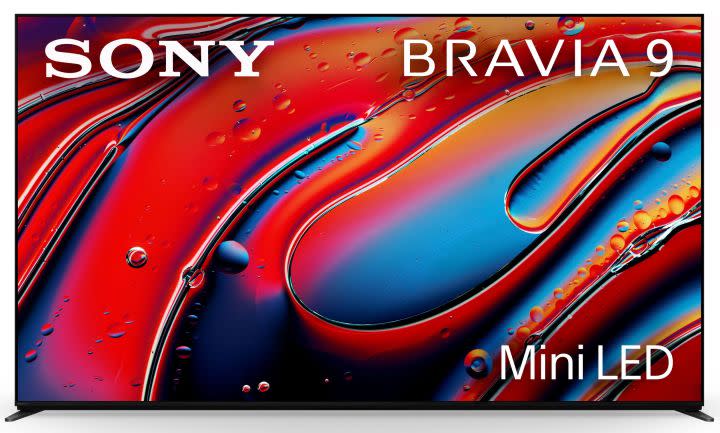
It’s a new era for Sony. The company, once famous for its horrible product names that more closely resembled serial numbers, has finally landed on a simple naming convention. Take its new 2024 TVs, for instance. Every new model is now called “Bravia,” with a single digit to denote where it stands in the lineup.
The simplified naming convention also applies to the company’s 2024 soundbar lineup, with the hope that buyers will want to pair their new Bravia TV with a matching new Bravia Theater soundbar.
Sony 2024 TV Lineup Revealed | Sony Changed EVERYTHING
The newest 2024 flagship TV is the Bravia 9, a 4K mini-LED model that joins the existing QD-OLED A95K and 8K mini-LED Z9K as the company’s very best TVs. Other new models include the Bravia 8, Bravia 7, and Bravia 3.
As with the flagships, Sony’s premium and mid-tier offerings will, for now, be a combination of existing models and the new Bravia-named TVs. Eventually, however, it will be an all-Bravia world.
Sony says select new models are available for preorder starting April 17, but no time frame for deliveries was offered.
The names may be new, but these TVs are effectively the next generation of previous Sony models. All of the new Bravia TV models include a Google TV interface with Google Assistant, access to the Sony Pictures Core app, and support for Dolby Vision, Dolby Atmos, IMAX Enhanced, and DTS:X. Plus, there’s also Sony’s Game Menu and PlayStation 5-exclusive technologies like Auto HDR Tone Mapping and Auto Genre Picture Mode. All of the new Bravia models have Chromecast built-in, Apple Air Play 2, and Apple Home Kit support.
At Sony’s launch event for the new TVs, Amazon Prime Video’s vice president of technology, B.A. Winston, was on hand to announce that the Bravia 7, 8, and 9 models will be among the first to offer the Prime Video Calibrated mode. Similar to the existing Netflix Calibrated Mode, it will automatically adjust picture settings based on the content being viewed, including live sports, marking the first time an automatic calibration mode has been applied to this type of content.
Here’s how the lineup breaks down.
2024 Sony Bravia 9 (mini-LED)
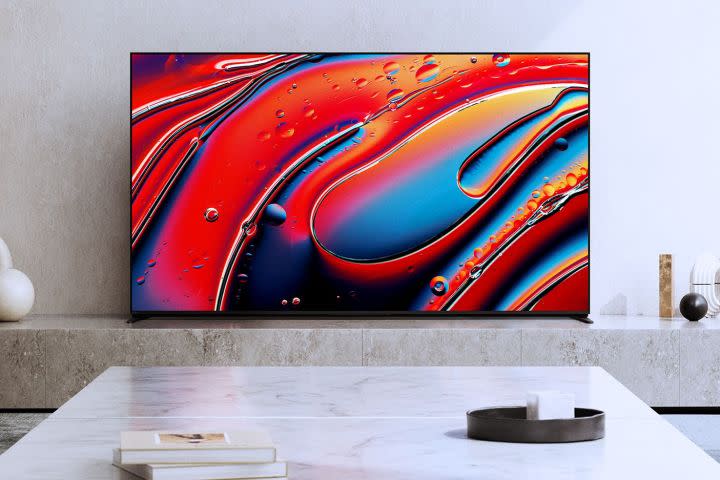
Sony’s newest flagship 4K TV goes head to head with its previous flagship — the QD-OLED A95K. Technically, the two live side by side in Sony’s 2024 lineup, but the Bravia 9 uses its thousands of quantum dot-enhanced mini-LEDs — controlled by its XR Backlight Master Drive — to deliver a far brighter image: up to 4,000 nits. Sony has kept its XR Processor as the brains controlling overall picture quality.
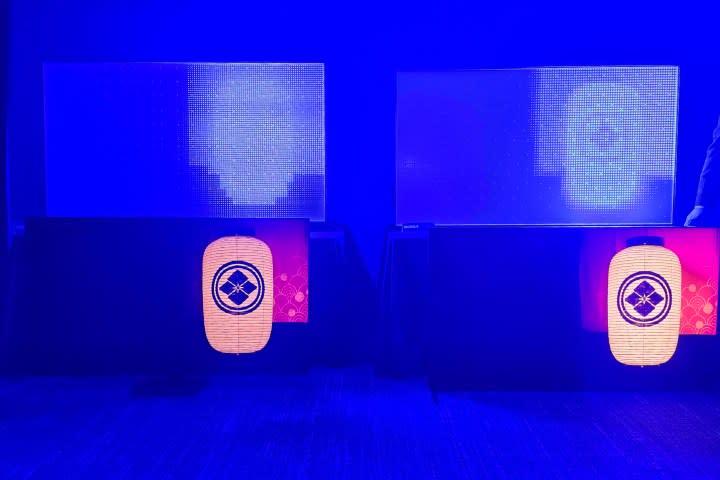
Sony says the Bravia 9 has approximately 325% more dimming zones and is approximately 50% brighter than its predecessor, the 2023 X95L – a TV that our reviewer claimed was the best LCD TV he’d ever seen at the time. However, at $5,500 for the 85-inch model, you’ll pay dearly for the Bravia 9’s improved performance — that’s $1,000 more than the 85-inch X95L’s debut pricing.
The Bravia 9’s panel also promises better off-angle viewing via X-Wide Angle technology and incorporates X-Anti Reflection to reduce screen glare.
HDMI 2.1 is fully supported on the Bravia 9, with 4K/120, variable refresh rate (VRR), auto low latency mode (ALLM), and Source-based Tone Mapping (SBTM), and it’s future-proofed for OTA TV with a built-in ATSC 3.0 tuner.
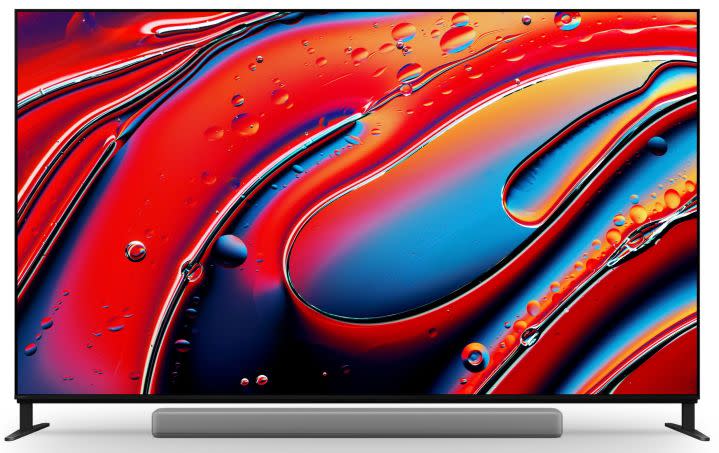
The new Acoustic Multi-Audio+ feature embeds upward firing beam tweeters and side frame tweeters, something that Sony claims has never been done on a TV before.
In addition to the support for spatial audio formats like Dolby Atmos and DTS:X, Sony has also equipped the Bravia 9 with its new Voice Zoom 3 AI dialogue enhancer, a technology that can detect and enhance voices while reducing the level of background sounds. It works via the TV’s internal speakers, but can also be used in conjunction with Sony’s 2024 Bravia Theater soundbars for an improved experience.
Also new on the Bravia 9 is a four-way adjustable stand that can be raised or lowered to accommodate a soundbar between the TV’s legs.
2024 Sony Bravia 8 (OLED)
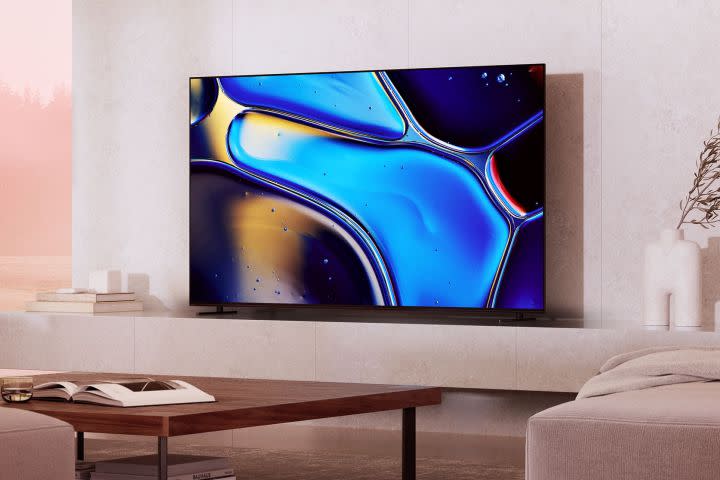
For 2024, Sony has decided to blur the lines between the underlying technology it uses on its TVs. The Bravia 8 uses a WOLED panel — not a mini-LED LCD panel. It’s essentially the next-gen A80L and Sony will sell it side by side with the existing A90K, which uses a similar OLED panel.
As an OLED-based TV, the Bravia 8 gets Sony’s excellent Acoustic Surface Audio+, which converts the entire screen into a speaker.
That’s in addition to full HDMI 2.1 support with 4K/120, VRR, ALLM, and the new-for-2024 SBTM, plus a built-in ATSC 3.0 tuner. The Bravia 8 also gets Sony’s new Voice Zoom 3, and the four-way stand configuration pictured above on the Bravia 9.
2024 Sony Bravia 7 (mini-LED)
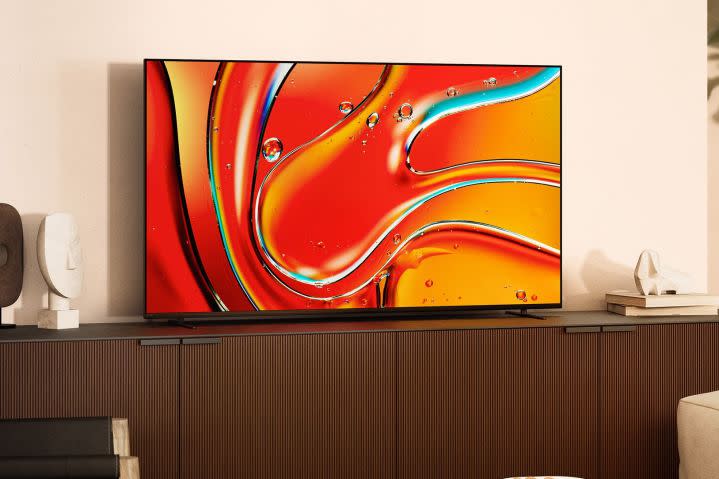
The Bravia 7 could be considered a replacement for the 2033 X90L series, but it’s quite a bit more advanced. Best to just think of it as Sony’s second-best LED TV.
It’s a mini-LED TV with full-array local dimming controlled by Sony’s XR Backlight Master Drive, and as with the Bravia 8 and 9, it uses Sony’s superb XR Processor. This is paired with XR Clear Image upscaling, a feature that has drawn rave reviews for its accuracy and detail.
The LCD panel has a native 120Hz refresh rate, making it an excellent gaming companion, as well as the full complement of HDMI 2.1 features that go hand in hand with that, like 4K/120, VRR, ALLM, and Source-based Tone Mapping (SBTM).
The Bravia 7 get Sony’s Acoustic Multi-Audio with Voice Zoom 3, an ATSC 3.0 tuner, and the same four-way stand from the Bravia 8 and 9.
2024 Sony Bravia 3 (LED)
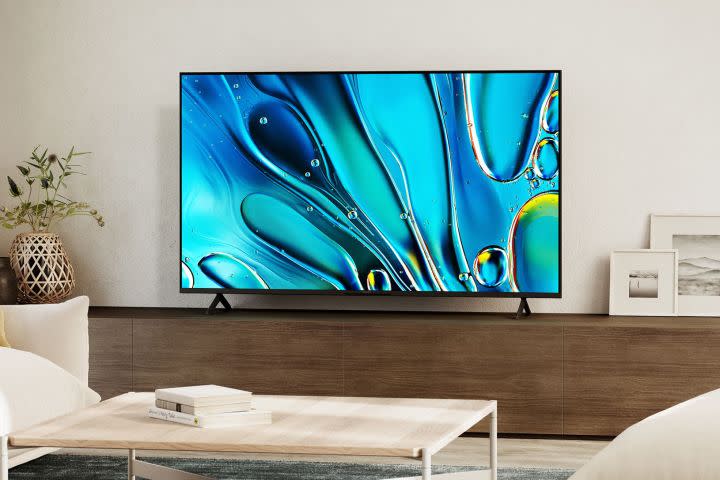
The Bravia 3 is Sony’s entry-level TV, although Sony’s entry-level models are going to perform more like other brands’ medium to medium-high level models.
It’s a direct LED TV, which means it doesn’t have local dimming. It has Sony’s 4K HDR X1 processor and 4K X-Reality Pro upscaling, which is a step down from the higher models, but still among the best TV processors on the market.
It has a 60Hz panel, but still sports some gaming features like ALLM. It supports Dolby Vision, Dolby Atmos, DTS:X (but not IMAX Enhanced) and DTS Digital Surround, as well as HDR10 and HLG.
Unlike its higher-priced siblings, it doesn’t have an ATSC 3.0 tuner, and it only has a single-position stand.

